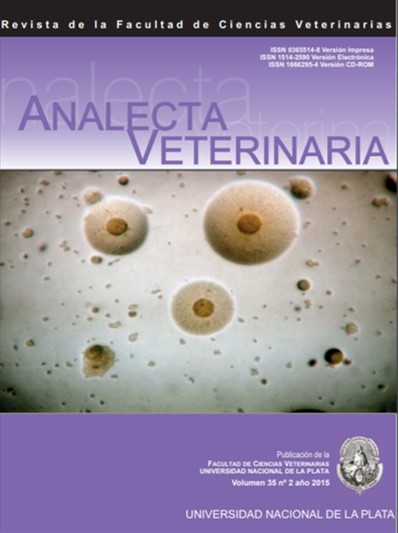<i>Metapneumovirus aviar</i>: revisión sobre aspectos etiológicos, clínicos, anatomopatológicos y epidemiológicos
DOI:
https://doi.org/10.24215/15142590ep.%2012-20Keywords:
sindrome de cabeza hinchadaAbstract
The Avian pneumovirus (APV) is a viral pathogen of birds, which has been associated with upper respiratory tract infections. Along with the Human metapneumovirus (hMPV), APV was placed in the genus Metapneumovirus. That is why it is currently called Avian metapneumovirus (aMPV). It was first reported in 1978 in South Africa. Then it was detected in Europe, Africa, Middle East and USA. It was classified into four subgroups called: A, B, C and D. While it causes a severe disease in turkeys, in chickens its role as a primary pathogen is less clear. It causes respiratory symptoms along with other agents and it also takes part of an entity known as swollen head syndrome. Chickens may have antibodies, without exhibiting signology. Transmission requires direct contact among birds. Its spread over long distances is uncertain, but wild birds are postulated as probable chain links. The diagnosis is usually based on serological tests, most commonly ELISA test. In Argentina its presence is estimated by antibodies detected in sera from commercial poultry, but there are no reports of isolation, or molecular detection.
Downloads
Metrics
Published
How to Cite
Issue
Section
License
Authors retain the copyright and assign to the journal the right of the first publication, with the with the terms of the Creative Commons attribution license. This type of license allows other people to download the work and share it, as long as credit is granted for the authorship, but does not allow them to be changed in any way or used them commercially.

Analecta Veterinaria by School of Veterinary Sciences, National University of La Plata is distributed under a Creative Commons Attribution-NonCommercial-NoDeriv 4.0 International License.

























